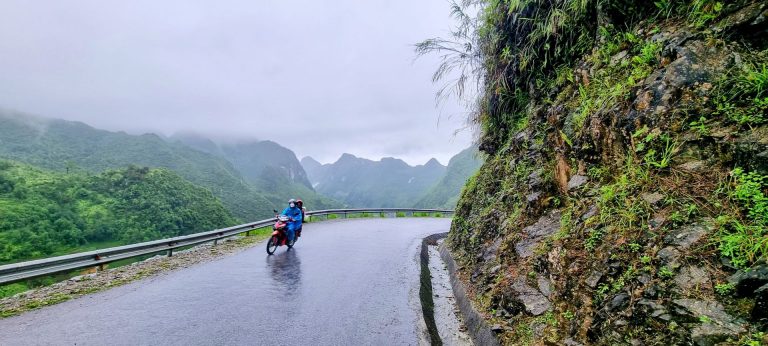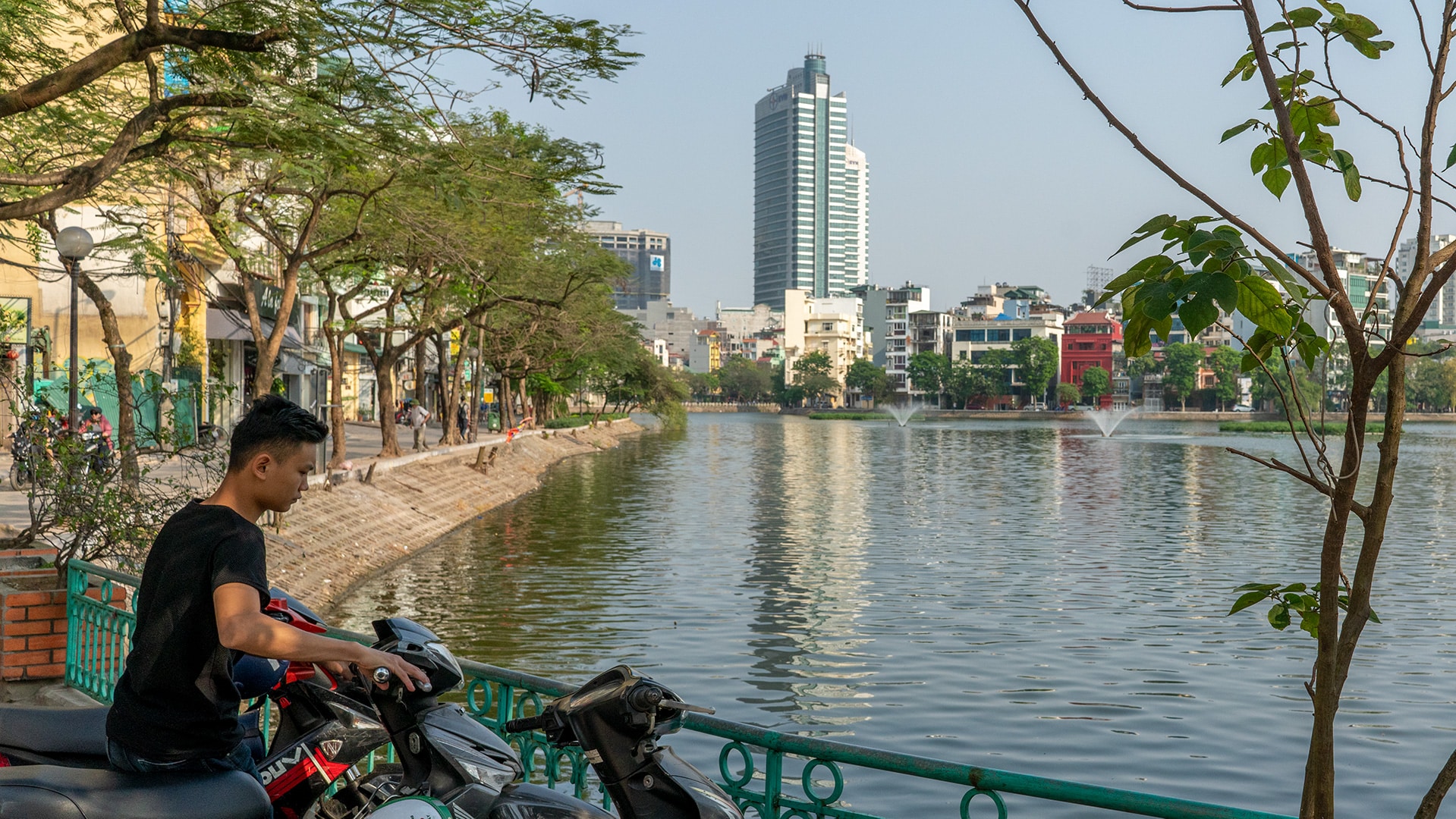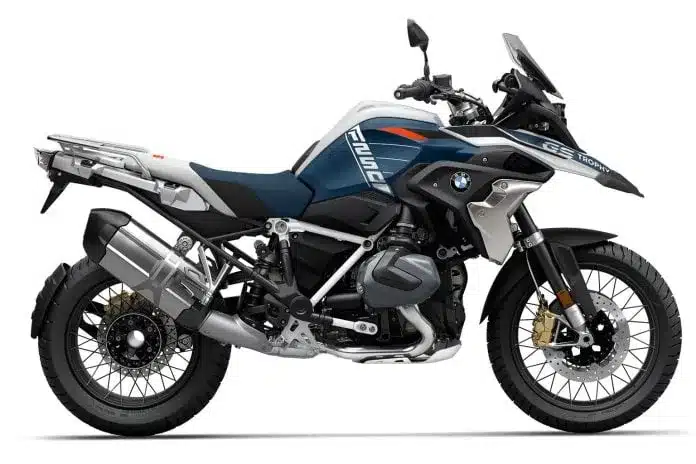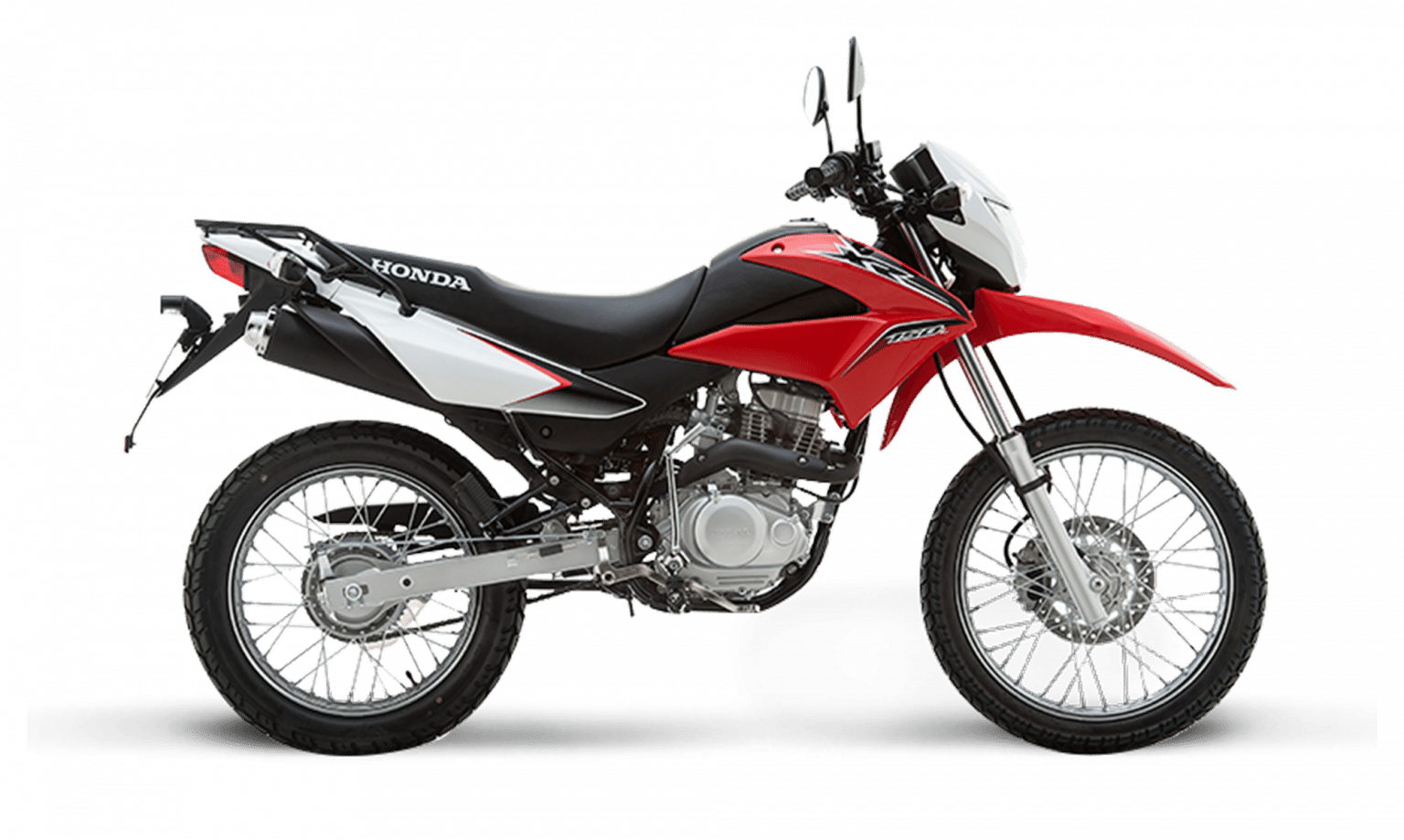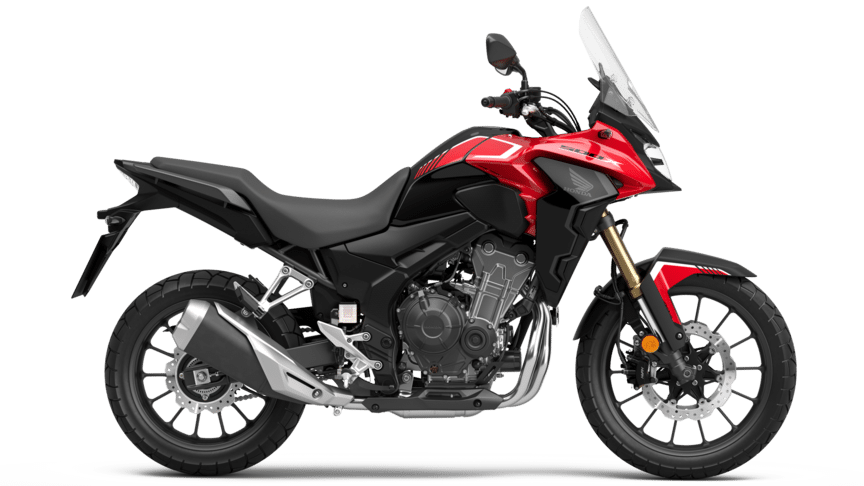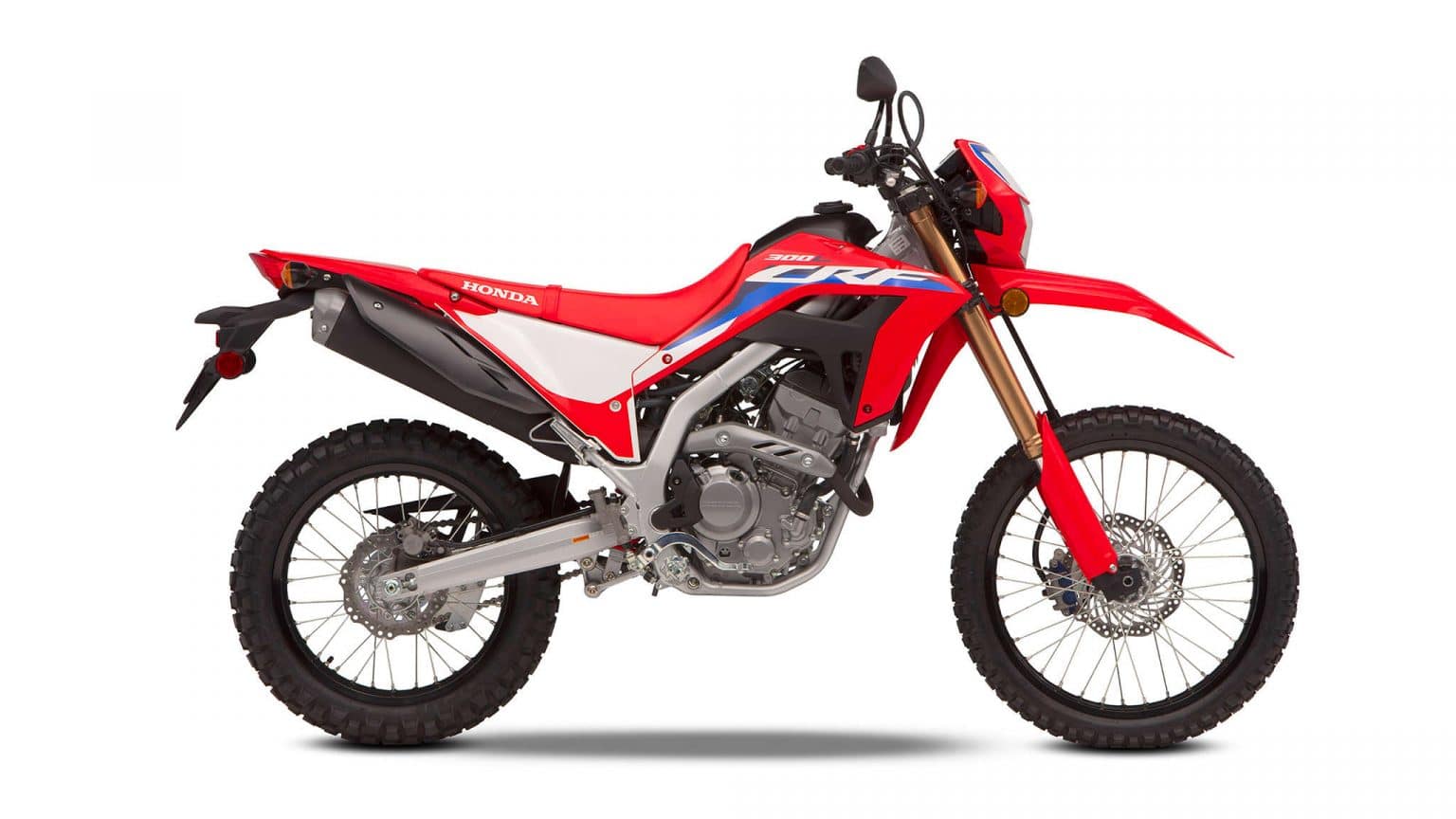Four Seasons
The weather in Vietnam is different across the country and is diverse in the capital city of Hanoi. Located in the north, the city of Hanoi experiences a wide range of weather conditions. Ranging from blaring heat and sun to overcast and cool.
The north of Vietnam’s weather system is much more complex than the south. The city of Hanoi embraces four full seasons throughout the year, making it a challenge to plan travel effectively. Visitors can expect to have entirely different experiences of the city dependent on the time they choose to visit.
In this post, we will explore the ever-changing weather in Hanoi. Firstly, we will explain how the four seasons can affect a visit to the city. Secondly, we will look at how to make the most of a visit to this vibrant city and it’s surrounding destinations. Taking all weather conditions into consideration.
What is the weather like in Hanoi?
As previously mentioned, the north of Vietnam experiences four seasons throughout the year. Winter, Spring, Summer, and Autumn. As a result, it is important to take these seasons into account when visiting the city of Hanoi.
Below you will find a breakdown of each of these seasons and what type of weather you can expect during
Hanoi Weather: December to March - Winter
Unlike the rest of the country, Hanoi and the north of Vietnam can get very cool during the winter months. This can affect plans drastically and can sometimes prevent visitors from making the most of their time in the north.
During this period, the sun has a tendency to disappear for long periods. And by long periods, we mean a few months. Despite this, it is still possible to enjoy a visit to Hanoi at this time. And although there may not be much sunshine, the city itself does not stop flowing.
It is also very hard to predict the weather in Hanoi altogether during this time as it can change day to day. Sunny and warm days are not uncommon and do come as a welcome surprise on occasion. You should by no means rule out a visit to Hanoi entirely during this period, the city can still be enjoyed!
The local Vietnamese simply wrap up warm and carry on. Temperatures tend to stay relatively moderate and do not drop below 15 degrees in the city. Which for some is much more pleasant than the summer heights of 40 degrees. And if you haven’t packed for the cool temperatures, there’s no need to panic! Hanoi’s Old Quarter is lined with small shops selling counterfeit winter gear for a very affordable price.
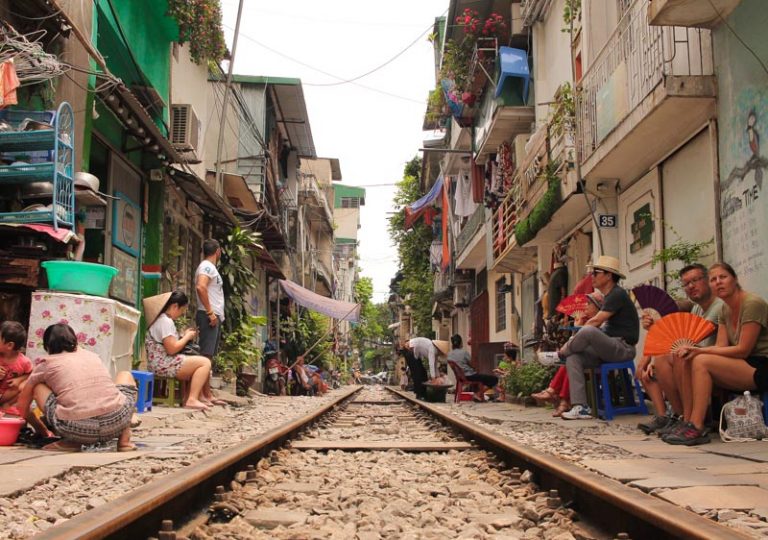
February: TET Holiday in Hanoi
The Vietnamese celebrate TET during February which coincides with the Chinese New Year. TET spans two weeks and many small family-run businesses will close for the holiday. This does not affect business in Hanoi city center, however, you may find it will affect opening hours and overall business. If you’re planning a trip during February, we suggest taking holiday dates into account.
Despite this, Hanoi can still be enjoyed during the TET holiday. There are various different TET celebrations that happen around Hoan Kiem Lake and throughout the centre of the city. The local Vietnamese will continue to celebrate their ancestors, gather in the streets to drink Bia Ha Noi and parade around Hoan Kiem Lake dressed as Chinese Dragons.
Hanoi can make for a very exciting and vibrant place to be during TET holiday!
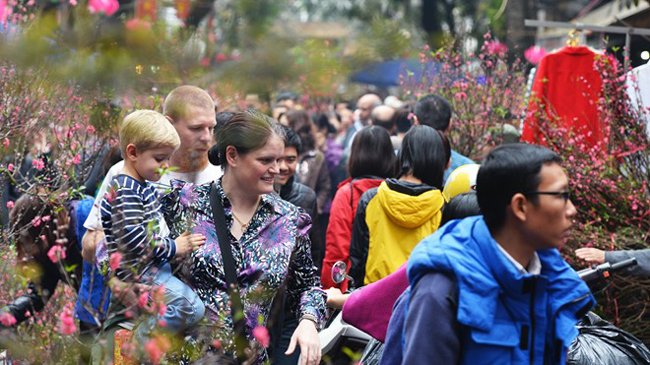
Hanoi Weather: April to June - Spring
The weather during spring in Hanoi is simply delightful. Days are bright and warm (and sometimes verging on very hot, but that can be forgiven). During this period the city experiences temperatures between 25 to 30 degrees and relatively low humidity.
If you’re wanting to experience Hanoi in all of its glory, this is one of the best times to visit. Rainfall during this period is at it’s lowest and days are at their brightest. During the winter, some of the trees in Hanoi lose their leaves and the city embraces a true winter feel. As a result, when the warmer days begin to roll in, blossom begins to appear on the trees and the streets are alive once again.
Due to moderate temperatures and low rainfall, Hanoi is extremely comfortable to explore by foot and motorbike during the spring. Compared to the very hot, humid summer months and cool wet winter months, this a great time to make the most of the city.
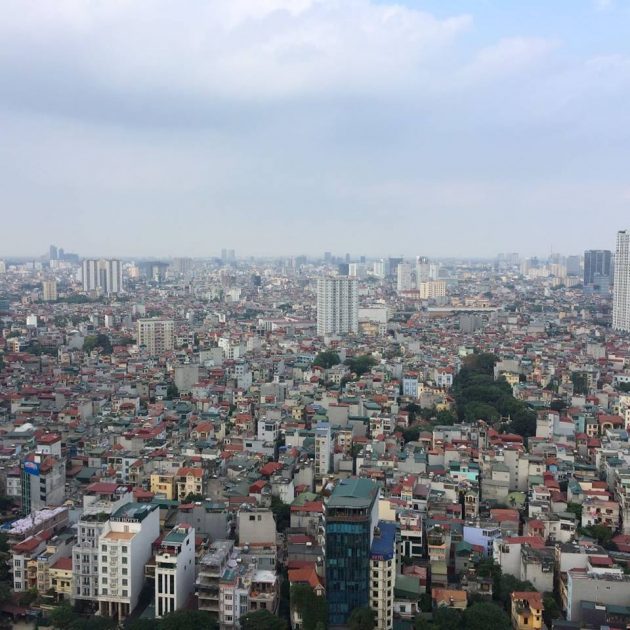
Hanoi Weather: July to September - Summer
The weather in Hanoi during the summer months is very much similar to that of the rest of Vietnam. The city experiences very high temperatures, high humidity, and frequent storms. Often you’ll leave the house and wonder why you even bothered to shower.
Temperatures can reach as high as 35+ degrees and humidity can rise to over 90%. The air can feel very sticky and it can sometimes be very uncomfortable to explore. It’s not uncommon to find yourself running for the next air con.
However, if you’re a fan of a thunderstorm, then this is the time to visit for you! Thunderstorms are frequent and impressive. Rainfall is very heavy but tends to pass quickly. Showers come and go in sometimes less than 5 minutes and blue skies often follow.
Despite the heavy rainfall, high temperatures, and rising humidity, Hanoi can be enjoyed during this period. Due to passing showers and the quick changing forecast, there are regular pleasant days where you will be able to make the most of the city.
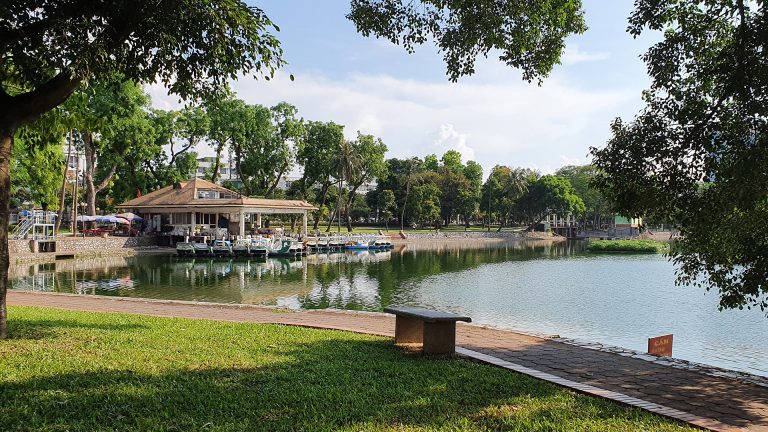
Hanoi Weather: October to November - Autumn
Towards the end of September, the weather in Hanoi becomes less challenging once again. Much like the spring, autumn is a fantastic time to visit the city. Temperatures begin to drop slightly and rainfall eases. Days are often bright and warm, making exploring the city easy and comfortable.
Temperatures range between 25 and 30 degrees and the sun often shines. If you’re wanting to make the most of your time in Hanoi, Autumn is a fantastic time to visit.
Destinations In Northern Vietnam: Weather
Hanoi is located at the very center of Northern Vietnam and is an excellent base for visitors wanting to explore the region. The weather system remains relatively consistent across the region, however, it can differ from destination to destination. The weather is a very important element to factor in when visiting such destinations as they often involve outdoor activities.
Below we will look at a few of the most popular destinations in North Vietnam and consider how the weather might affect a trip to each region.
Weather in Ha Long Bay
Located 200km East of Hanoi is the highly popular destination of Ha Long Bay. This cluster of 200+ limestone islands sprawl from the eastern coastline and form hundreds of small, peaceful bays. Visitors often choose to explore the area by boat, soaking up some of Vietnam’s finest coastal scenery. More adventurous visitors will make the most of the bay by taking part in activities such as rock climbing, paddleboarding, hiking, and kayaking.
Due to the nature of these activities, the weather is something that must be factored in when visiting this destination. The best times of year to visit Ha Long are during the Spring and Autumn months, especially if you intend on taking part in any of these activities. During this time you can expect clear skies, moderate temperatures, and minimal rainfall.
During the summer and winter months, rainfall can be heavy and skies often grey. Visibility during winter can be low which can affect your experience of Ha Long Bay drastically. However, Ha Long Bay takes on a whole different appearance when visibility is low and it becomes rather eery. Small mountains just seem to appear from the mist as your boat sails through the fog.
Tours run to Ha Long Bay all year round and they do not let the weather affect their service. You can expect to enjoy the bay all year round regardless of weather conditions.
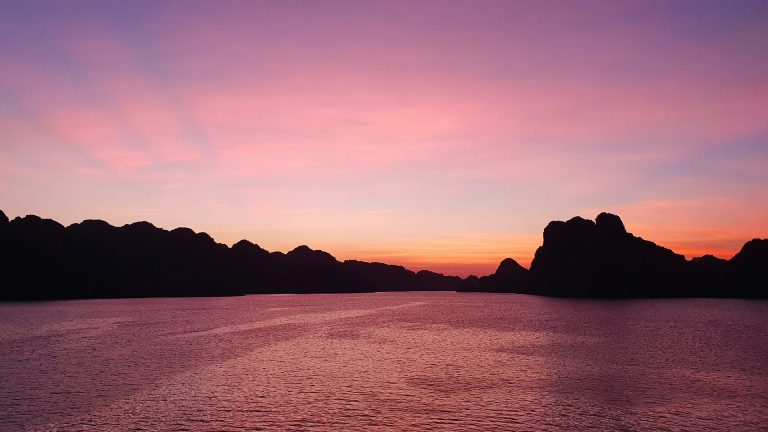
Weather in Sapa
Located 300km west of Hanoi, the mountain town of Sapa sits within one of Vietnam’s most stunning mountain ranges. An extremely popular destination in the North of Vietnam, Sapa attracts tourists all year round. Those visiting this jaw-dropping landscape go with the aim of enjoying the stunning scenery with various outdoor activities.
Due to the elevation of the area in which Sapa sits, you can expect to experience all types of weather conditions. It is one of the only places in Vietnam where snow has fallen during the winter months!
The best time of year to visit Sapa is during autumn and spring. Throughout these months the town and surrounding mountain range experience warm temperatures of between 20 to 30 degrees and minimal rainfall. These are the ideal conditions for those wanting to go hiking or trekking across the stunning landscape. Sapa is famous for it’s rolling rice terraces and these can be seen for miles during these months.
During the summer and winter months, Sapa experiences more extreme weather conditions that can affect your travel plans drastically. It is not uncommon for Sapa to get very cold during the winter months, dropping to temperatures of around 5 degrees. The mountains are also likely to be hidden by heavy clouds during this time, making hiking a challenge and unrewarding.
Over the summer months, rainfall is very high and once again the mountains can be hidden by dense rain clouds, making exploring a challenge. Heavy rainfall can also lead to landslides, making hiking and riding a motorbike dangerously.
If you’re planning a trip to Sapa during winter or summer, we suggest you check the weather forecast prior to your visit and pack accordingly.
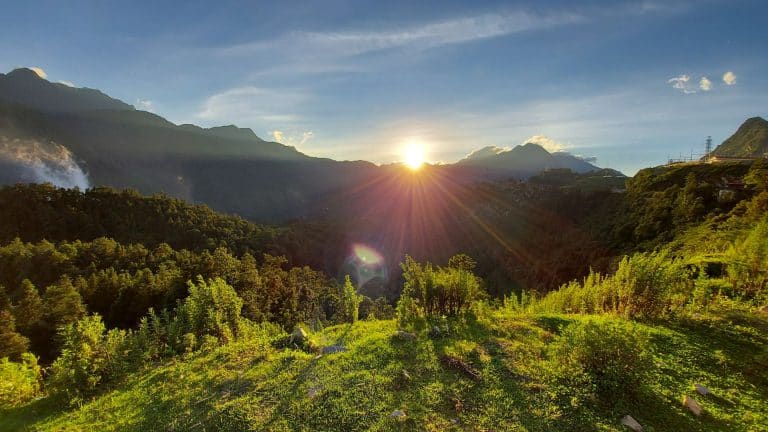
Weather in Ha Giang
The weather in Ha Giang is very much similar to that of Sapa. Located 300km north of Hanoi, Ha Giang a region made up of sprawling mountains and winding mountainside roads. As a result, visitors in this region often aim to travel by motorbike, embracing the challenging roads and remote cultures.
Ha Giang Loop is the region’s most popular attraction. Visitors travel 4 to 5 days by motorbike around some of the countries’ most stunning and beautiful scenery. The drive has riders cruising along challenging mountain passes, down jaw-dropping valley roads and through various different ethnic villages. A truly once in a lifetime experience.
Due to the nature of this activity, it is important to visit during the peak season to ensure safe travel. The best time to visit Ha Giang is during the autumn and spring months. Much like the rest of the north, the summer and winter months can be challenging due to temperatures and rainfall.
However, if you do plan on completing Ha Giang Loop during summer or winter, be sure to check conditions prior to travel.
Click here to read more about our Top 9 Destinations in Northern Vietnam.
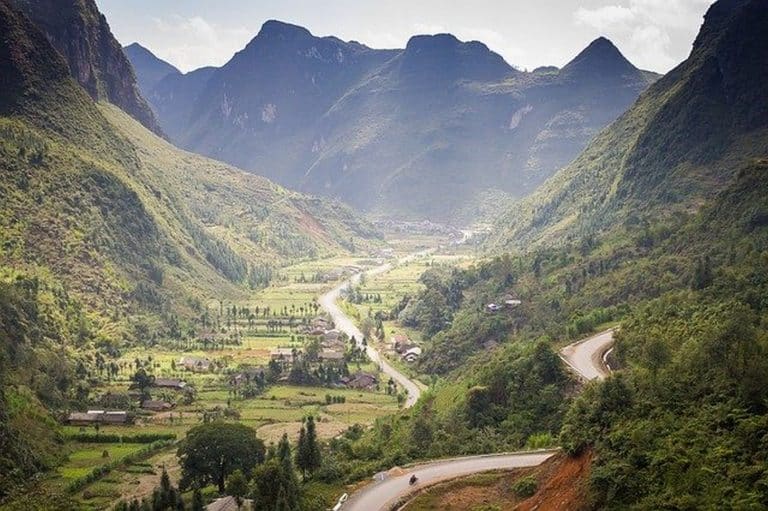
Weather in Hanoi: Best Time to Visit
It is possible to enjoy a visit to Hanoi and other destinations in the north of Vietnam all year round. As we’ve mentioned throughout the post, due to the region’s ever-changing weather conditions it’s possible to experience pleasant days all year round.
However, based on general weather conditions, spring and autumn are the best times of year to visit. During these seasons you’re less likely to find yourself walking through a flooded road or huddling next to a bowl of Pho for warmth.
It is however important not to rule out a visit to the north during the summer and winter. Weather conditions across the whole of Vietnam are different throughout the year. So if it’s cold and cloudy in Hanoi, it’s probably warm and sunny in Ho Chi Minh. Our advice is to see as much of the country as possible during your time in Vietnam and experience all 4 seasons in two weeks!
